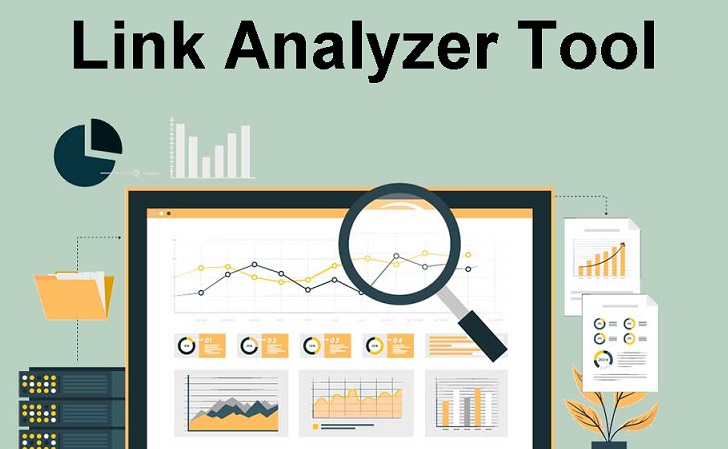

Enter a URL
A web-based tool called a Link Analyzer Tool is used to look at the links on a page. It helps website owners and admins determine how their website's links are being used and rate their link profile. This tool "crawls" the website and analyses the links, giving you specific information about how they are put together and how good they are.
Link analyzer tools can tell you how many links are on a page, what the anchor text is, what each link's HTTP success code is, and what kind of link it is. (e.g., internal or external). It can also help find broken links or redirects and judge the links' importance, authority, and trustworthiness.

Using a Link Analyzer Tool, website owners and admins can find problems with their link profiles and fix them to improve their website's ranking in search engine results pages. (SERPs).
The way a Link Analyzer Tool works depends on the tool that is being used, but in general, they all follow the same steps:
1. Crawling: The website being looked at is "crawled" by the Link Analyzer Tool, which finds all the links on the site, both internal and external.
2. Data collection: The tool gathers information about each link, such as the anchor text, the URL, the HTTP status code, and the type of link. (e.g., internal or external).
Once the data has been received, the Link Analyzer Tool looks at the links and gives information about the links' structure and the website's quality. This could mean finding failed links or redirects, figuring out how good the links are, and pointing out any possible problems with the link profile.
3. Reporting: Once the research is done, the tool reports website owners and web admins tips on improving their website's link profile.
Overall, a Link Analyzer Tool gives website owners and web admins a full picture of their website's links and helps them make smart choices to improve their website's performance and search engine results.
The Link Analyzer Tool is important for website owners and admins because it gives them useful information about a website's link profile. Here are some important things about the Link Analyzer Tool:
1. Broken Link Detection: The Link Analyzer Tool can find broken links on a website. Broken links can hurt the user experience and search engine score of a website, and this tool makes it easy for website owners to find and fix them.
2. Backlinks Check: Using the Link Analyzer Tool, you can figure out how good the links on a website are. This is important because the search engine score of a website can be affected by how good the links are. Website owners can make sure that their links are useful, trustworthy, and authoritative by judging the quality of their links.
3. Internal Linking Structure: The Link Analyzer Tool can help you determine how a website's internal links are set up. Internal linking is important because it helps search engines determine how a website is put together and in what order things should be found. By looking at the layout of internal links, website owners can see where the site's organization and structure could be improved.
4. Improve Website SEO: Using the Link Analyzer Tool's information, website owners can make decisions that will help improve their website's search engine score. This can lead to more traffic, which can lead to more sales.
Overall, the Link Analyzer Tool is an important tool for website owners and web admins because it gives information about a website's link profile, which can help improve a website's search engine score and performance overall.
Here are some general steps that can help you get started:
1. Enter the website URL you want to analyze.
2. Start the Analysis: Once you've entered the website's URL, start the analysis. The tool will go through the whole page and find all the links.
3. Look at the Outcomes: You should look at the results after the research. The tool will show information about the website's link profile, such as the number of links, the anchor text used, the HTTP status code of each link, and the link type (e.g., internal or external). Use this information to determine what's wrong with the link profile and how to fix it.
4. Do Something: Based on what the tool tells you, do something to improve the website's link profile. This could mean fixing broken links, improving anchor text, and changing how internal links are set up.
5. Watch the Results: Once you've taken steps to fix the problem, you should watch the results. Use the Link Analyzer Tool to track how the link profile changes over time so you can make changes to your plan.
Overall, using a Link Analyzer Tool can help you learn important things about a website's link profile and take steps to improve its performance in search engines and in general.
This webpage link checker will show you the following:
How many links are on your web page as a whole.
How many links to other pages are on a page.
How many links to other sites are on a web page.
The number of links on a page that do not follow any links that do follow.